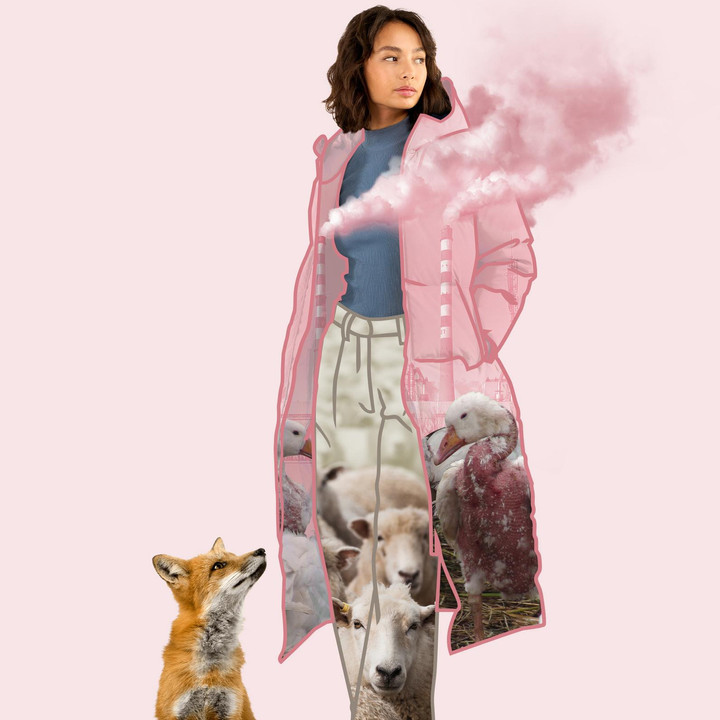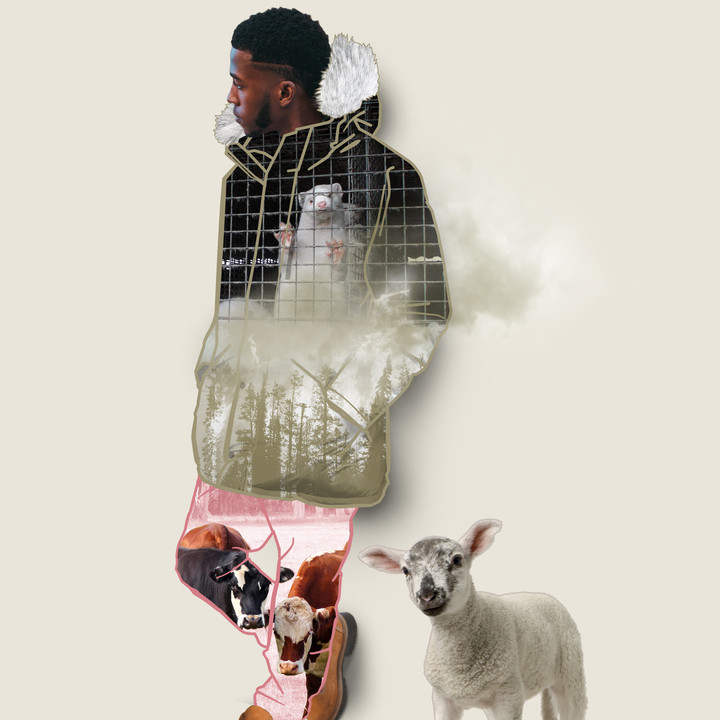
FOUR PAWS Launches ‘Taming Fashion’ – An Urgent Call to Reduce Animal Use
A two-part report series that reveals the broad environmental and animal welfare costs of utilising animals for fashion
Despite the devastating effects they can have on both the environment and the animals involved in their production, animal-derived materials (ADMs) continue to be widely used by the global fashion industry. These materials are often marked as ‘natural’, yet many brands and consumers remain unaware of the true costs of using them.
In the Taming Fashion report series, we outline the reasons why reducing the use of animals in fashion is essential for achieving a truly sustainable fashion industry. We provide a comprehensive assessment of the animal welfare and environmental impacts associated with fashion’s most widely used ADMs. Additionally, we highlight the growing availability of innovative material alternatives that are both animal-free and environmentally friendly.

The problem with ADMs
Billions of animals are used every year to create textiles for the fashion industry. But it’s not only animals suffering in the production of ADMs, it is also having a devastating impact on our environment.
Animal welfare
Numerous undercover investigations have documented the extensive animal suffering and abuse that occurs in the production of ADMs. Cruel practices persist, such as live plucking of birds for their feathers, mulesing of lambs bred for their wool, and fur-bearing animals spend their entire lives in tiny cages, only to be cruelly slaughtered for their fur.
Even for brands with certified textile supply chains and animal welfare policies, there is inherent risk to animal welfare in the intensive production of ADMs and it remains highly challenging to guarantee that animals are being treated humanely.
Environment
There is a common misconception that because ADMs come from animals, they are natural and therefore sustainable. However, the environmental impact of ADMs is significant, and their production is often directly linked to intensive livestock farming, accounting for 83% of agricultural land use1 and 16.5% of the world’s greenhouse gas emissions2.
And it’s not just the farming phase of ADM production that is detrimental to the environment, these materials need a significant amount of processing before use, often requiring treatment with toxic chemicals, heavy metals, or fossil fuel-based substances.
Concerns around the use of ADMs are often dismissed due to the assumption that they are simply by-products of the meat industry, however in fact, they are often highly valuable co-products, and by using ADMs, brands create additional revenue streams or cost cutting opportunities for animal agriculture, ultimately helping to uphold these high risk and inefficient industries.

The solution
With over three billion dollars of investment into the next-gen materials industry over the past decade, we are seeing more and more innovative and ingenious ways of producing textiles for fashion without the huge cost to animals and the environment. Brands such as Stella McCartney, Ganni, Miomojo, Pangaia and even Hermès are already successfully showcasing garments and accessories made from plants and fungi, using microbes, and other innovative processes.
It is vital that brands support these innovators in their efforts to transform the fashion industry for the better, and we can do this by first by reducing our use of ADMs and transitioning to low-impact animal-free material choices.
Note: Any advertisements that may appear during the viewing of this video are unrelated to FOUR PAWS. We assume no liability for this content.
A Call to Action
FOUR PAWS is calling on fashion brands to Refine, Reduce and Replace ADMs in their supply chains with more sustainable options, and to support the development and uptake of next-gen materials.
Here are just some of the steps that brands can take right now to lessen their impact:
- Reduce use of ADMs. Brands must make publicly committing to reduce the use of ADMs a priority, which will in turn help to reduce the negative impacts of industrialised animal agriculture.
- Invest in alternatives. Consumer interest in animal-free fashion is growing and while billions of dollars have already been invested into the development of alternatives, we must now continue this trajectory and focus on scaling up.
- Refine supply chains. In addition to significantly reducing use of ADMs, brands need to address risks in their remaining ADM supply chains and at an absolute minimum, ensure to only use material certified by the most robust animal welfare certification. However ideally brands, would go above and beyond if they intend to continue using animals.
Let’s help create a kinder fashion industry and a make the world a place where animals, the environment and people are treated with respect, empathy and understanding.
What can shoppers do?
The clothes we choose to wear reflect the way we see ourselves and how we want to be perceived by others. We are all impacted by the decisions fashions brands make, but we have the power to influence them for the better and ensure our fashion choices are aligned with our ethics.
Here’s how you can change your habits for the better to Wear it Kind:
- Love pre-loved clothing!
- Try the 80:20 rule. 80% pre-loved and 20% new and kind
- Look for animal-free biobased or recycled materials, like handbags made from mushrooms!
- Go for products made from waste, like discarded fishing nets and even used coffee grinds.
- Be a protector of oceans and rivers by washing clothes less, spot cleaning and using washing bags that collect microfibres.
- Speak up! Let your friends and favourite brands know that you want more animal-friendly fashion!
Are your favourite fashion brands doing enough to protect animals and the environment?
How can consumers encourage fashion brands to reduce their use of ADMs?
- Let brands know how you feel about their use of ADMs and their negative impacts.
- Ask them what next-gen materials they are investing in or trialling, you could even encourage them to create a version of your favourite bag or accessory with a next-gen material – brands want to know there is demand for change amongst their customer base!
- For brands still using ADMs, ask about their animal welfare policies and what they are doing to phase out their use, or at the very less help to ensure better welfare.
For more information, read theTaming Fashion report, part one and part two and pledge to #WearItKind.
Source
2 Twine, R. Emissions from Animal Agriculture | mdpi.com. [2 June 2021; accessed 1 June 2023]. https://www.mdpi.com/2071-1050/13/11/6276



